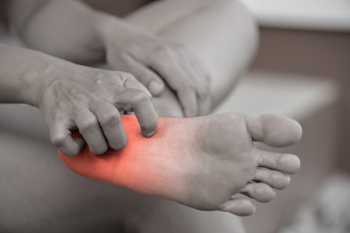 Sometimes it can be difficult to tell the difference between a sprain and a foot fracture. Both injuries have very similar symptoms, including pain, swelling, and bruising. A fracture will often be so painful that you may not be able to walk. Sprains can also make walking difficult, depending on the severity of the injury. At the time that you injure your foot, you may hear a noise. A popping sound can indicate a sprain, while a cracking sound can indicate a fracture. Treatments for the two conditions are different, so it is important to get a proper diagnosis. If you have injured your foot, it is suggested that you see a podiatrist as soon as possible.
Sometimes it can be difficult to tell the difference between a sprain and a foot fracture. Both injuries have very similar symptoms, including pain, swelling, and bruising. A fracture will often be so painful that you may not be able to walk. Sprains can also make walking difficult, depending on the severity of the injury. At the time that you injure your foot, you may hear a noise. A popping sound can indicate a sprain, while a cracking sound can indicate a fracture. Treatments for the two conditions are different, so it is important to get a proper diagnosis. If you have injured your foot, it is suggested that you see a podiatrist as soon as possible.
A broken foot requires immediate medical attention and treatment. If you need your feet checked, contact one of our podiatrists from Canonsburg Podiatry Associates. Our doctors can provide the care you need to keep you pain-free and on your feet.
Broken Foot Causes, Symptoms, and Treatment
A broken foot is caused by one of the bones in the foot typically breaking when bended, crushed, or stretched beyond its natural capabilities. Usually the location of the fracture indicates how the break occurred, whether it was through an object, fall, or any other type of injury.
Common Symptoms of Broken Feet:
- Bruising
- Pain
- Redness
- Swelling
- Blue in color
- Numbness
- Cold
- Misshapen
- Cuts
- Deformities
Those that suspect they have a broken foot shoot seek urgent medical attention where a medical professional could diagnose the severity.
Treatment for broken bones varies depending on the cause, severity and location. Some will require the use of splints, casts or crutches while others could even involve surgery to repair the broken bones. Personal care includes the use of ice and keeping the foot stabilized and elevated.
If you have any questions please feel free to contact our office located in Canonsburg and McMurray, PA . We offer the newest diagnostic and treatment technologies for all your foot and ankle needs.




